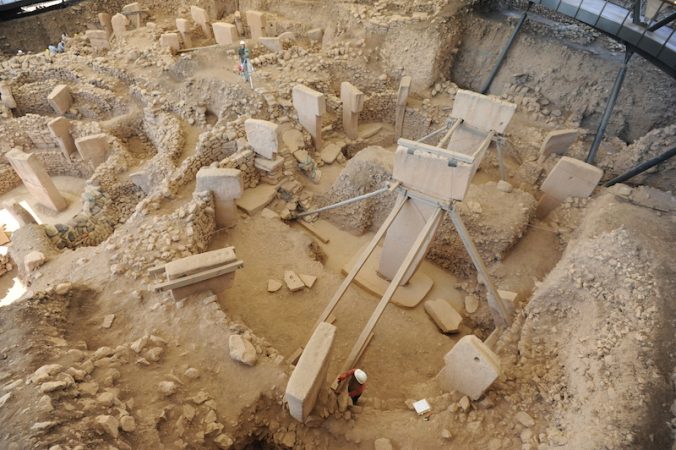A couple of weeks ago, in June, we thanked you, the esteemed readers of this blog, for your ongoing interest in the German Archaeological Institute’s Göbekli Tepe research project as it is impressively visible by the visitor numbers of this blog. Thanks again once more! Yet we also used the opportunity to offer a kind of questionnaire via twitter, giving you the chance to adress your questions regarding the excavations at early Neolithic Göbekli Tepe.
Since we consider this little experiement in ‘science communication’ a success, we are not only discussing and planning to repeat something similar in the not too distant future, but also would like to share the outcome of this first Q&A here. Maybe you’ll find some of the answers and discussions which emerged from this question time of interest; some of the links provided are certainly worth a look. Thanks a lot to everyone participating.
Introduction
First of all we started of with some more general remarks, intoducing ourselves as moderators of this Q&A and the site of Göbekli Tepe itsels as well as the state of research so far.
Site & Monuments
Many of the questions coming up early in the discussion were in particular directed at the nature of the archaeological site itself and the monuments unearthed there.
Excavations and field research
Also, excavation methods applied at Göbekli Tepe and aspects of field research took an interest in the course of the session.
Analyses
Question for applied methods of course also included analyses and research undertaken at desk and lab.
Iconography
One of the most important features of the Göbekli Tepe monuments is their complex iconography – which naturally also generated much interest during among questioners.
Interpretation
Next to obtaining material sources by excavation, one of the most important parts of archaeological research is to interpret the finds and features unearthed and collected. So this was another topic of many questions.
Environment
To properly understand how prehistoric people interacted with the world around them, it is of course inevitable to also have a look at this world they are living in, at environment and climate. Another point which also was picked up by some of the questions.
Culture
These PPN hunters certainly were not acting in a social vacuum, so questions to the cultural background of the Göbekli Tepe monuments and their builders are only logical.
Links & connections to other sites
Comparisons with other monuments or thoughts about a possible connection to such are quite often put forward then discussing Göbekli Tepe (in fact, we had a whole blog post dedicated to this topic just recently).
Prospects
Some questions were interested in future work at the site and pending research results.
Thanks, and goodbye
With some closing remarks we finally had to bring this most interesting hour to an end, definitely overhelmed by the number of participants and questions and really glad to see so much interest in the work of the Göbekli Tepe research project. Thanks a lot!
Since the great and very encouraging feedback this Q&A received and the interesting discussions it triggered, we can only thank everyone who participated again and repeat what’s already mirrored in this last tweet above: That we definitely repeat this in due time. So, have your questions ready – see you then.

Recent Comments